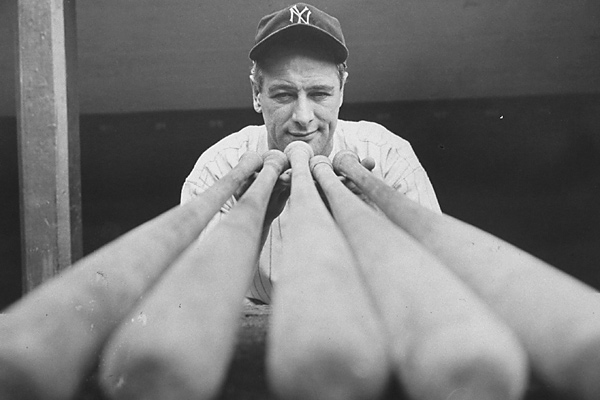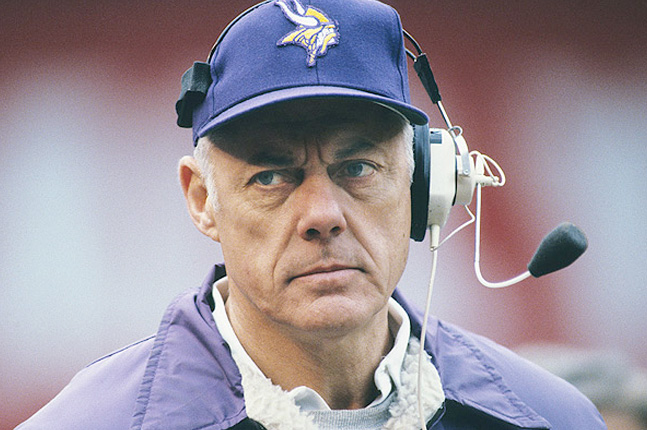Hall of Fame baseball player Lou Gehrig was born in New York City in 1903. A standout football and baseball player, Gehrig signed his first contract with the New York Yankees in April 1923. Over the next 15 years he led the team to six World Series titles and set the mark for most consecutive games played. He retired in 1939 after getting diagnosed with ALS. Gehrig passed away from the disease in 1941.
Early Years
Henry Louis Gehrig was born in the Yorkville section of Manhattan in New York City, on June 19, 1903. His parents, Heinrich and Christina Gehrig, were German immigrants who’d moved to their new country just a few years before their son’s birth.
The only one of the four Gehrig children to survive infancy, Lou faced a childhood that was shaped by poverty. His father struggled to stay sober and keep a job, while his mother, a strong woman who was intent on creating a better life for her son, worked constantly, cleaning houses and cooking meals for wealthy New Yorkers.
A devoted parent, Christina pushed hard for her son to get a good education and got behind her son’s athletic pursuits, which were many. From an early age, Gehrig showed himself to be a gifted athlete, excelling in both football and baseball.
After graduating from high school, Gehrig enrolled at Columbia University, where he studied engineering and played fullback on the football team. In addition, he made the school’s baseball team, pitching solidly for the club and earning the nickname Columbia Lou from adoring fans. In one famous game, the young hurler struck out 17 batters.
But it was Gehrig’s bat that appealed to the New York Yankees, who in April 1923, the same year Yankee Stadium first opened, signed Gehrig to his first professional contract. The deal included a $1,500 signing bonus, a fantastic sum for Gehrig and his family, which allowed him to move his parents to the suburbs and, more important, play baseball full-time.
Major League Success
Just two months after signing the contract, in June 1923, Gehrig debuted as a Yankee. By the following season, Gehrig was inserted into the lineup to replace the team’s aging first baseman, Wally Pipp. The change proved to be no small matter. It set in motion a streak in which Gehrig established a Major League Baseball record by playing in 2,130 consecutive games. Gehrig’s famous record was finally broken in 1995, when Baltimore Oriole shortstop Cal Ripken Jr. eclipsed the mark.
Beyond his consistent presence, however, Gehrig also became an offensive force in an already potent lineup. He and his teammate Babe Ruth formed an unmatched power-hitting tandem.
Quiet and unassuming, Gehrig struggled to make friends with many of his colorful and spotlight-hungry Yankee teammates, especially Ruth. But his hardworking nature and ability to play through incredible pain certainly earned their respect, and earned him the nickname “The Iron Horse.” Yankee fans, meanwhile, were thankful just to have him in the lineup.
His Hall of Fame career saw him score 100 runs and knock in at least that many in 13 consecutive seasons. In 1931, he set an American League record by clubbing 184 RBIs; three years later, he took home baseball’s coveted Triple Crown by leading the league in home runs (49), average (.363) and RBIs (165). That same year he became the first player to hit four home runs in a single game.
In the World Series, Gehrig was equally impressive, batting .361 over the course of his career, while leading the club to six championships.
Illness and Retirement
In 1938 the aging Gehrig turned in his first subpar season. His hard-charging career seemed to have caught up with him as his body started to fail him. But Gehrig, who was having trouble with things as simple as tying his shoelaces, feared he might be facing something more than just the downslide of a long baseball career.
In 1939, after getting off to a horrid start to the baseball season, Gehrig checked himself into the Mayo Clinic, where after a series of tests, doctors informed him that he was suffering from amyotrophic lateral sclerosis (ALS), a devastating disease that strips nerve cells of their ability to interact with the body’s muscles. His diagnosis with the disease helped put the spotlight on the condition, and in the years since Gehrig’s passing, it has come to be known popularly as “Lou Gehrig’s disease.”
On May 2, 1939, Gehrig’s ironman streak came to an end when he voluntarily took himself out of the lineup. Not long after, Gehrig retired from baseball. He returned to Yankee Stadium on July 4 of that year so that the team could hold a day in his honor. Standing on the field where he’d made so many memories and wearing his old uniform, Gehrig said goodbye to his fans with a short, tearful speech to the crowded ballpark.
“For the past two weeks you’ve been reading about a bad break,” he said. “Today I consider myself the luckiest man on the face of the earth.” He paid tribute to his parents, wife and teammates, and then closed by saying: “I might have been given a bad break, but I have an awful lot to live for. Thank you.”
Last Years
Following Gehrig’s retirement, Major League Baseball circumvented its own rules and immediately inducted the former Yankee into its Hall of Fame in Cooperstown, New York. In addition, the Yankees retired Gehrig’s uniform, making him the first baseball player ever to receive that honor.
Over the next year, Gehrig maintained a busy schedule, accepting a civic role with the City of New York in which the former ballplayer determined the time of release for prisoners in the city’s penal institutions.
By 1941, however, Gehrig’s health had significantly deteriorated. He largely remained at home, too frail to even sign his own name, much less go out. On June 2, 1941, he passed away in his sleep at his home in New York City.





